The Economics and Statistics Division maintains archives of previous publications for accountability purposes, but makes no updates to keep these documents current with the latest data revisions from Statistics Canada. As a result, information in older documents may not be accurate. Please exercise caution when referring to older documents. For the latest information and historical data, please contact the individual listed to the right.
<--- Return to Archive
For additional information relating to this article, please contact:
February 06, 2019BUILDING PERMITS, DECEMBER AND ANNUAL 2018 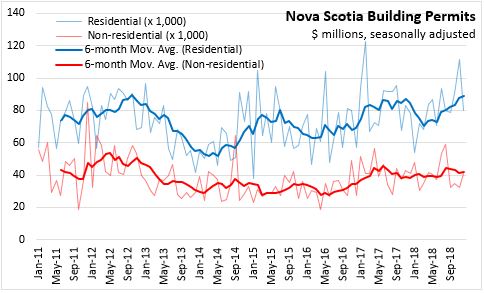
The value of building permits (seasonally adjusted) issued in Nova Scotia declined 16.0 per cent in December, following a (revised) increase of 15.0 per cent in November. Residential permits decreased 28.4 per cent while non-residential building permits rose 26.7 per cent. Monthly results for building permits are highly volatile; the six-month moving average of residential permits trended modestly upwards through 2017 and then declined in early 2018. Residential permits have since re-established an upward trend. The non-residential permits' six-month moving average has remained relatively flat since mid-2017.
The trend in Nova Scotia building permit values largely reflects the trends in the Halifax market. In December, the value of Halifax building permits declined 39.2 per cent, reflecting declines in both residential (-41.1 per cent) and non-residential permits (-30.8 per cent). The six-month moving average for residential permits in Halifax rose from mid-2016 through 2017 and then declined in the early months of 2018. Since the spring of 2018, residential permits have been trending upward. Non-residential permits in Halifax have trended down since last June.
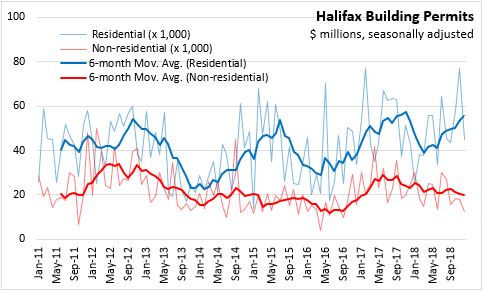
Outside the Halifax market, building permit values were up 28.8 per cent in December, as non-residential permits rose 98.0 per cent and residential permits edged down 0.1 per cent. Non-residential permits have been trending upward outside of Halifax since mid-2017, while residential permits have trended upward at a more modest pace.
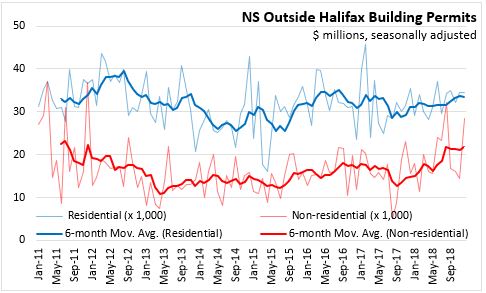
In 2018, the value of Nova Scotia building permits (unadjusted annual total) was down 1.7 per cent compared to 2017. Residential permits are 1.9 per cent lower and non-residential permits are down 1.3 per cent for year. The decline in non-residential building permits reflects declines in commercial (-3.4 per cent) and institutional and governmental (-33.0 per cent), partially offset by a 44.6 per cent increase in industrial permits. Halifax building permits were down 8.9 per cent in 2018, while building permits outside of Halifax were up 10.0 per cent.
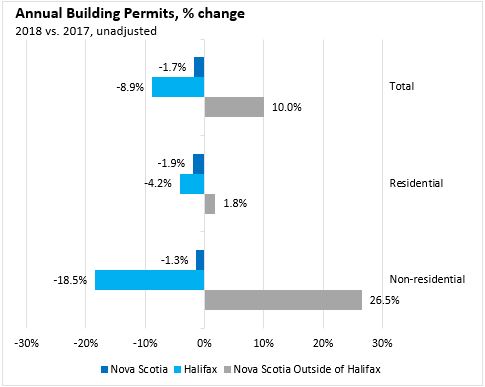
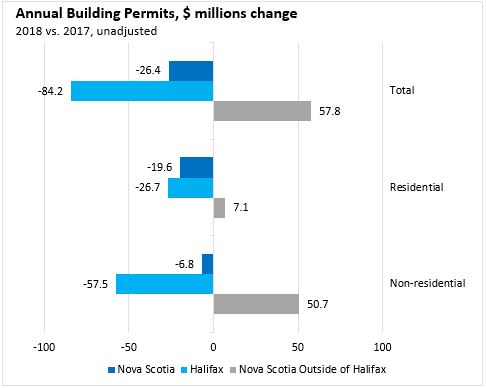
Nova Scotia's five economic regions combined for a total of $63.4 million (unadjusted) in residential and non-residential building permits in December 2018. The largest contributor was the Halifax region, with a combined residential and non-residential permit value of $29.5 million.
In 2018, building permits (unadjusted) among the economic regions totaled $1.50 billion, of which 58 per cent were in Halifax economic region. The total value of permits was up in Cape Breton and North Shore regions, while it declined in Halifax, Annapolis Valley and Southern Nova Scotia in 2018.
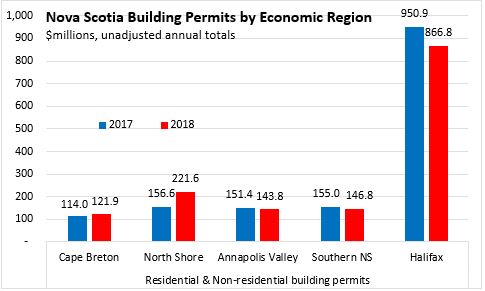
In 2018, the number of residential dwelling-units created (unadjusted for seasonality) in Nova Scotia was up by 154 units compared to the previous year. Across the province, the number of multiple units created was up while singles were down.
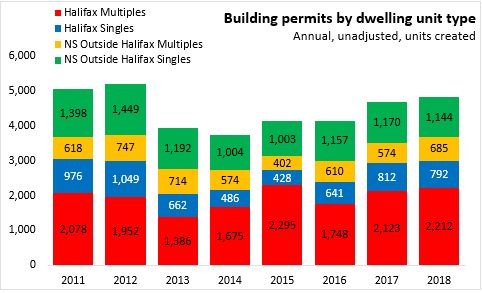
Nationally, residential building permit values (seasonally adjusted) were on an upward trend in 2016 but have levelled off since early 2017. Residential building permits rose 4.2 per cent in December. Non-residential building permit values rose through 2017 and peaked toward the end of the year, remaining relatively flat through 2018. Non-residential building permits increased 8.9 per cent in December.
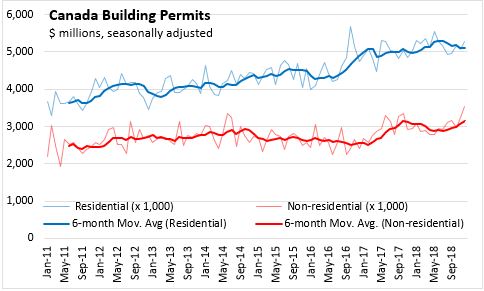
Comparing 2018 with 2017, Prince Edward Island (+24.3 per cent) reported the largest gain in residential permits (unadjusted for seasonality), in percentage terms. Saskatchewan posted the largest decline (-26.9 per cent) over this period.
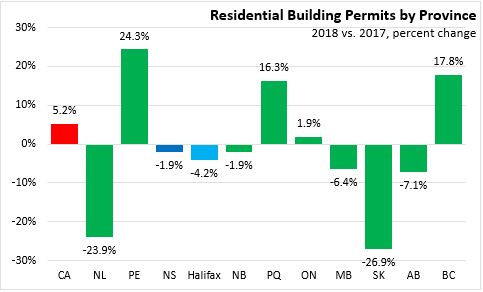
In 2018, Newfoundland and Labrador had the largest gains in non-residential building permits (+65.3 per cent, unadjusted) while New Brunswick reported the largest decline (-24.5 per cent).
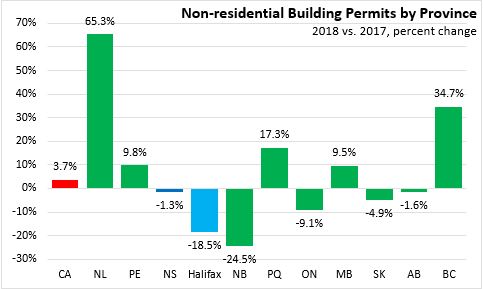
Total building permits values (unadjusted) were up in four provinces in 2018, with British Columbia (+22.3 per cent) and Newfoundland and Labrador (+19.3 per cent) reporting the largest gains (in percentage terms). Saskatchewan reported the largest decline over this period (-16.7 per cent) followed by New Brunswick (-15.5 per cent).
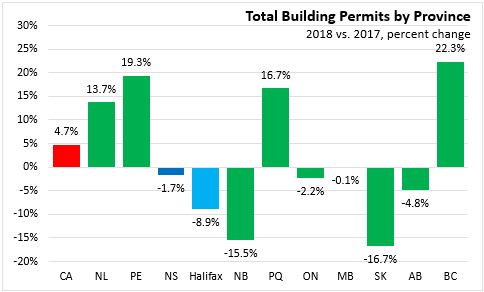
Source: Statistics Canada Table 34-10-0066-01
<--- Return to Archive